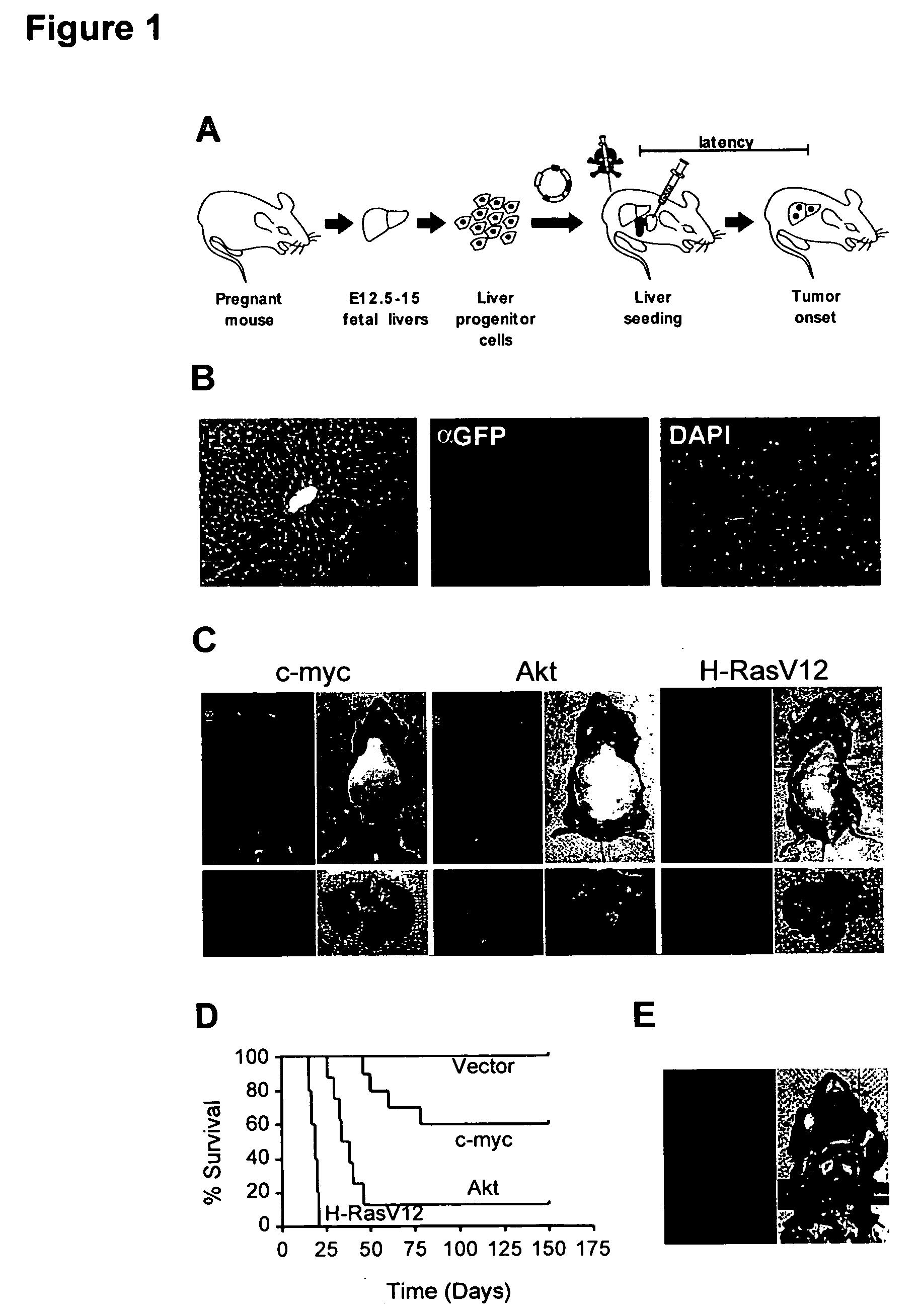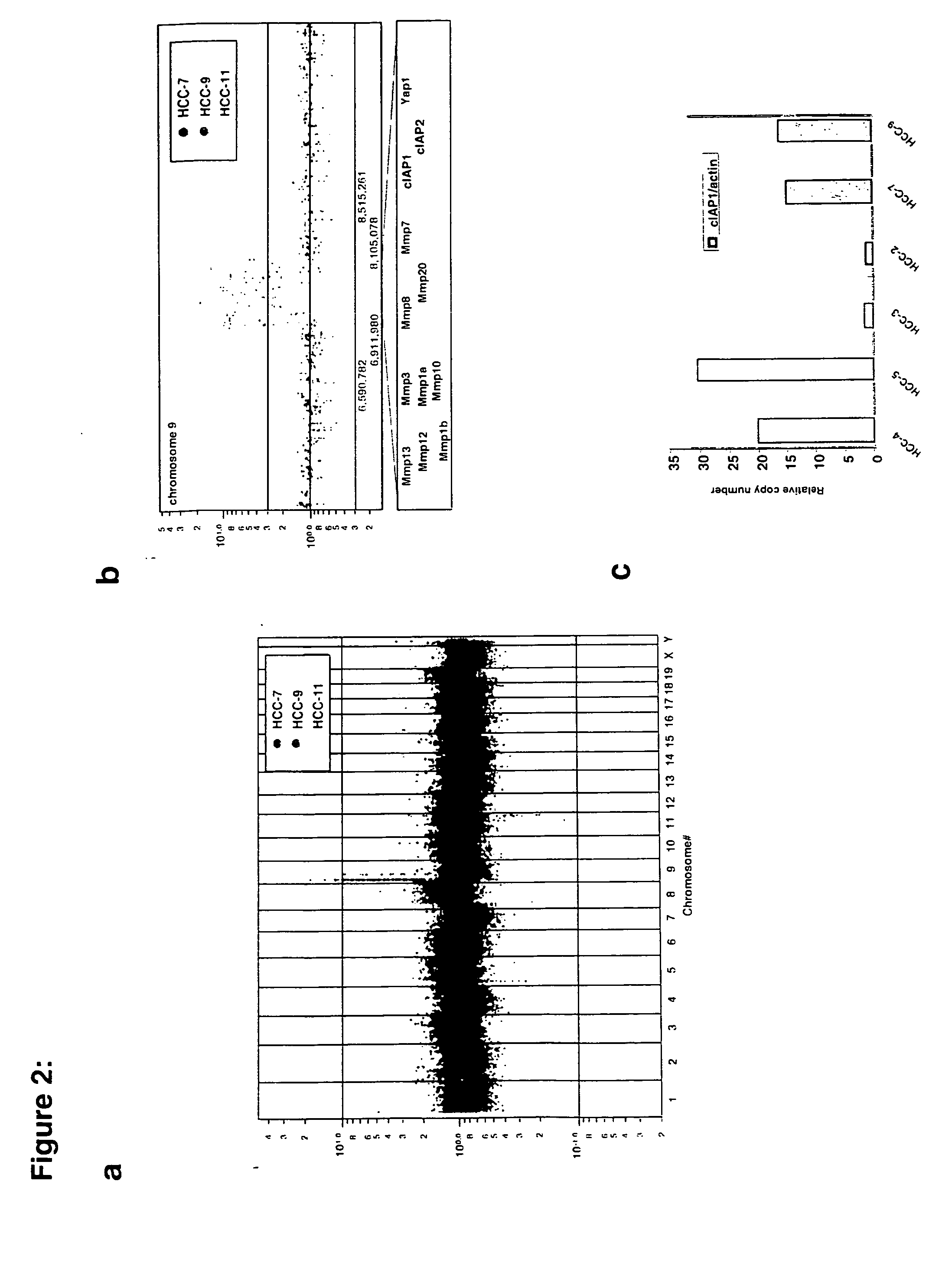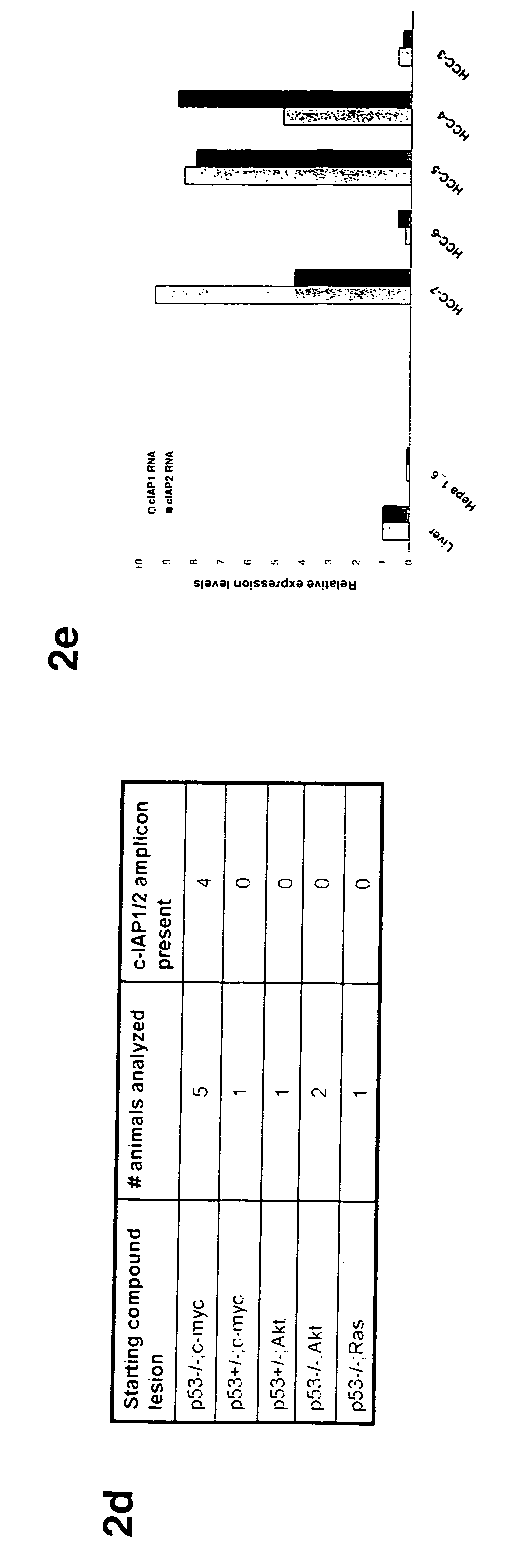Development and use of a new orthotopic, genetically tractable non-human animal model for liver cancer
- Summary
- Abstract
- Description
- Claims
- Application Information
AI Technical Summary
Benefits of technology
Problems solved by technology
Method used
Image
Examples
example 1
Generation and Transplantation of Genetically Altered Liver Progenitor Cells
[0056] To determine whether genetically modified hepatoblasts could colonize recipient livers, a protocol was used that optimizes engraftment of transplanted cells in the recipient liver. Embryonic hepatoblasts express high E-Cadherin levels on their cell surface, which enables these cells to be isolated to high purity from fetal livers using magnetic bead selection. (Nitou et al. “Purification of fetal mouse hepatoblasts by magnetic beads coated with monoclonal anti-e-cadherin antibodies and their in vitro culture.”Exp. Cell Res. 279, 330-343. (2002)). These cells express markers characteristic of bi-potential oval cells, the presumed cellular target of transformation in the adult rodent liver.
[0057] Animals were pretreated with retrorsine, an alkaloid that exerts a strong and persistent block of native hepatocyte proliferation and increases the competitive advantage of transplanted cells. Ten days after...
PUM
| Property | Measurement | Unit |
|---|---|---|
| Length | aaaaa | aaaaa |
| Sensitivity | aaaaa | aaaaa |
Abstract
Description
Claims
Application Information
 Login to View More
Login to View More - R&D
- Intellectual Property
- Life Sciences
- Materials
- Tech Scout
- Unparalleled Data Quality
- Higher Quality Content
- 60% Fewer Hallucinations
Browse by: Latest US Patents, China's latest patents, Technical Efficacy Thesaurus, Application Domain, Technology Topic, Popular Technical Reports.
© 2025 PatSnap. All rights reserved.Legal|Privacy policy|Modern Slavery Act Transparency Statement|Sitemap|About US| Contact US: help@patsnap.com



